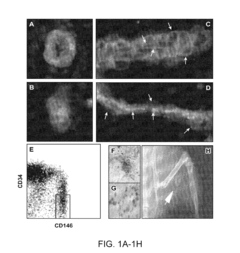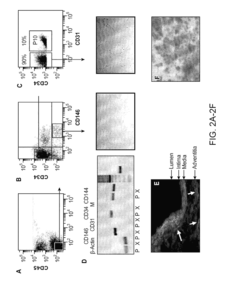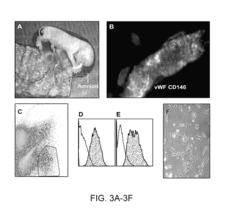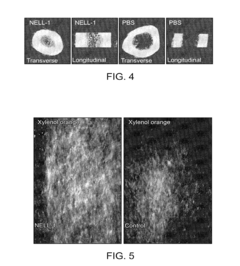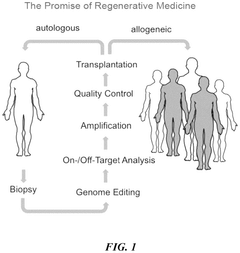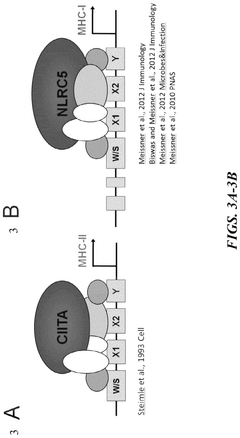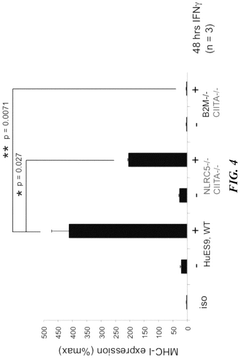Hypertonic Approaches to Regenerative Medicine: Breakthroughs
Hypertonic Regenerative Medicine Background
Hypertonic approaches to regenerative medicine represent a groundbreaking frontier in the field of tissue engineering and cellular therapy. This innovative technique leverages the power of hyperosmotic solutions to enhance the regenerative potential of various tissues and organs. The concept of using hypertonic solutions in medicine dates back to the early 20th century, but its application in regenerative medicine has gained significant traction in recent years.
The fundamental principle behind hypertonic regenerative medicine lies in the manipulation of cellular osmotic gradients. By exposing cells and tissues to hypertonic environments, researchers can induce controlled stress responses that trigger adaptive mechanisms and enhance cellular resilience. This approach has shown promising results in improving cell survival, proliferation, and differentiation, which are crucial factors in tissue regeneration and repair.
One of the key advantages of hypertonic approaches is their ability to modulate the extracellular environment, influencing cell behavior and tissue organization. This has led to advancements in areas such as wound healing, where hypertonic solutions have been shown to accelerate tissue repair and reduce scarring. Additionally, hypertonic treatments have demonstrated potential in preserving and revitalizing organs for transplantation, offering new possibilities in the field of organ preservation and regeneration.
The evolution of hypertonic regenerative medicine has been closely tied to advancements in our understanding of cellular biology and osmotic regulation. Early studies focused primarily on the effects of hypertonic solutions on individual cells, while more recent research has expanded to explore their impact on complex tissues and organ systems. This progression has been facilitated by technological advancements in imaging, molecular biology, and bioengineering, allowing for more precise control and analysis of hypertonic treatments.
As the field continues to develop, researchers are exploring various hypertonic agents and delivery methods to optimize regenerative outcomes. These include the use of natural osmolytes, synthetic compounds, and even nanoparticle-based delivery systems. The versatility of hypertonic approaches has led to their investigation in a wide range of medical applications, from treating neurological disorders to enhancing bone and cartilage regeneration.
Despite the promising advancements, challenges remain in fully harnessing the potential of hypertonic regenerative medicine. These include optimizing treatment protocols, understanding long-term effects, and addressing potential side effects associated with osmotic stress. Ongoing research aims to overcome these hurdles and translate hypertonic approaches into clinically viable therapies that can revolutionize regenerative medicine and improve patient outcomes across various medical disciplines.
Market Analysis for Hypertonic Therapies
The market for hypertonic therapies in regenerative medicine is experiencing significant growth, driven by increasing demand for innovative treatments in tissue engineering and wound healing. This emerging field combines the principles of osmosis with advanced regenerative techniques, offering promising solutions for various medical conditions.
The global regenerative medicine market, which encompasses hypertonic therapies, is projected to expand rapidly in the coming years. This growth is fueled by factors such as the rising prevalence of chronic diseases, an aging population, and advancements in biotechnology. Hypertonic approaches are gaining traction due to their potential to enhance tissue regeneration and improve wound healing outcomes.
One of the key market segments for hypertonic therapies is wound care. The wound care market is substantial, with a growing need for advanced treatments that can accelerate healing and reduce complications. Hypertonic solutions have shown promise in managing chronic wounds, such as diabetic ulcers and pressure sores, by promoting tissue regeneration and reducing bacterial colonization.
Another significant area of application is in orthopedics and sports medicine. Hypertonic therapies are being explored for their potential to enhance cartilage repair and regeneration, addressing conditions like osteoarthritis and sports-related injuries. This segment represents a substantial market opportunity, given the high incidence of joint disorders and the growing demand for minimally invasive treatments.
The market for hypertonic approaches in regenerative medicine is also expanding in the field of ophthalmology. Hypertonic solutions are being developed for corneal regeneration and the treatment of dry eye syndrome, offering new possibilities for patients with ocular surface disorders.
Geographically, North America and Europe are currently the leading markets for hypertonic therapies in regenerative medicine, due to their advanced healthcare infrastructure and higher adoption rates of innovative treatments. However, the Asia-Pacific region is expected to witness rapid growth in the coming years, driven by increasing healthcare expenditure and a large patient population.
Despite the promising outlook, the market faces challenges such as regulatory hurdles and the need for extensive clinical validation. However, ongoing research and development efforts are likely to address these issues and further expand the applications of hypertonic approaches in regenerative medicine.
Current Challenges in Hypertonic Approaches
Despite the promising potential of hypertonic approaches in regenerative medicine, several significant challenges currently impede their widespread adoption and clinical application. One of the primary obstacles is the difficulty in maintaining a stable hypertonic environment within target tissues over extended periods. The rapid diffusion of solutes and fluid shifts can quickly neutralize the hypertonic effect, limiting its therapeutic duration and efficacy.
Another critical challenge lies in the precise control of osmotic gradients. Excessive hypertonicity can lead to cellular dehydration and damage, while insufficient hypertonicity may fail to elicit the desired regenerative responses. Striking the right balance requires sophisticated delivery systems and real-time monitoring technologies, which are still in their infancy.
The heterogeneity of tissues and organs presents a further complication. Different cell types and tissue structures respond variably to hypertonic stimuli, making it challenging to develop standardized protocols that can be universally applied across diverse regenerative medicine applications. This variability necessitates tailored approaches for each specific tissue type and pathological condition.
Biocompatibility and long-term safety concerns also pose significant hurdles. The introduction of hypertonic solutions or materials into the body can potentially disrupt local homeostasis and trigger inflammatory responses. Ensuring that these interventions do not cause unintended harm or compromise overall tissue function remains a critical area of investigation.
Moreover, the translation of promising laboratory findings to clinical practice faces regulatory and scalability challenges. The complex nature of hypertonic approaches often involves novel biomaterials or delivery systems, which must undergo rigorous safety and efficacy testing before gaining regulatory approval. Scaling up production while maintaining consistency and quality control adds another layer of complexity to the commercialization process.
Lastly, there is a notable gap in our understanding of the underlying mechanisms by which hypertonic environments promote tissue regeneration. While empirical evidence supports their efficacy in certain applications, the molecular and cellular pathways involved are not fully elucidated. This knowledge gap hampers the rational design of more effective and targeted hypertonic therapies.
Addressing these challenges requires a multidisciplinary approach, combining advances in materials science, drug delivery, tissue engineering, and molecular biology. As researchers continue to innovate and overcome these obstacles, the potential for hypertonic approaches to revolutionize regenerative medicine remains significant, promising new avenues for treating a wide range of degenerative diseases and injuries.
Existing Hypertonic Solutions
01 Hypertonic solutions for medical treatments
Hypertonic solutions are used in various medical treatments, including wound healing, reducing edema, and managing intracranial pressure. These solutions have a higher solute concentration than body fluids, creating an osmotic gradient that draws fluid out of tissues. This approach can be beneficial in treating conditions where fluid reduction is necessary.- Hypertonic solutions for medical treatments: Hypertonic solutions are used in various medical treatments, particularly for conditions involving fluid imbalances. These solutions have a higher solute concentration than body fluids and can help draw excess fluid from tissues. Applications include treating edema, reducing intracranial pressure, and managing certain types of shock.
- Hypertonic approaches in wound healing: Hypertonic solutions are employed in wound care to promote healing and prevent infections. These solutions can help clean wounds, reduce swelling, and create an environment unfavorable for bacterial growth. They may be used in dressings, irrigation solutions, or topical applications for various types of wounds.
- Hypertonic solutions in cell preservation and cryopreservation: Hypertonic approaches are utilized in cell preservation techniques, particularly in cryopreservation. These solutions help protect cells from damage during freezing and thawing processes by controlling ice crystal formation and cellular dehydration. This is crucial for preserving various biological materials, including cells, tissues, and organs.
- Hypertonic strategies in agriculture and food preservation: Hypertonic solutions play a role in agriculture and food preservation. In agriculture, they can be used to enhance seed germination or improve plant stress tolerance. In food preservation, hypertonic environments created by salt or sugar solutions help prevent microbial growth and extend shelf life of various food products.
- Hypertonic approaches in industrial and environmental applications: Hypertonic solutions find applications in various industrial and environmental processes. These include water treatment, desalination, and certain cleaning or extraction processes. The high solute concentration of hypertonic solutions can be leveraged for separating substances or treating contaminated water sources.
02 Hypertonic approaches in cell preservation
Hypertonic solutions play a crucial role in cell preservation techniques, particularly in cryopreservation. These solutions help protect cells from damage during freezing and thawing processes by controlling ice crystal formation and cellular dehydration. This approach is widely used in biotechnology, reproductive medicine, and organ transplantation.Expand Specific Solutions03 Hypertonic formulations for drug delivery
Hypertonic formulations are utilized in drug delivery systems to enhance the absorption and efficacy of certain medications. These formulations can improve the permeability of biological membranes, allowing for better drug penetration and distribution. This approach is particularly useful for topical, nasal, and ocular drug delivery.Expand Specific Solutions04 Hypertonic solutions in food preservation
Hypertonic solutions are employed in food preservation techniques to extend the shelf life of various products. By creating an environment with high solute concentration, these solutions inhibit microbial growth and reduce water activity in foods. This approach is commonly used in pickling, curing, and other food processing methods.Expand Specific Solutions05 Hypertonic approaches in environmental applications
Hypertonic solutions find applications in environmental technologies, such as water treatment and soil remediation. These solutions can be used to extract contaminants from soil or water through osmotic processes. Additionally, hypertonic approaches are explored in desalination techniques and the treatment of industrial wastewater.Expand Specific Solutions
Key Players in Regenerative Medicine
The field of hypertonic approaches in regenerative medicine is experiencing significant breakthroughs, indicating a rapidly evolving market in its growth phase. The market size is expanding as research institutions and pharmaceutical companies invest heavily in this promising area. Technologically, the field is progressing from early-stage research to more advanced clinical applications. Key players like The Regents of the University of California, Harvard College, and Novartis AG are driving innovation, while emerging companies such as NuPotential, Inc. and Sana Biotechnology, Inc. are contributing to the competitive landscape. The involvement of diverse entities, from academic institutions to biotech firms, suggests a maturing technology with potential for widespread clinical implementation in the near future.
The Regents of the University of California
Sana Biotechnology, Inc.
Breakthrough Hypertonic Technologies
- The development of purified perivascular stem cells (PSC) or induced pluripotent stem cells (iPS) identified by specific markers, along with a supernatant containing trophic factors, which can stimulate tissue or organ formation, and the use of an inductive agent like Nell-1 peptide to promote differentiation, are employed to create compositions and methods for treating medical conditions.
- Employing genome editing technologies like CRISPR/Cas or TALEN systems to reduce or eliminate expression of critical immune genes such as MHC-I and MHC-II in human pluripotent stem cells, and inserting tolerogenic factors to create hypoimmunogenic stem cells that are less prone to immune rejection, thereby overcoming the immune response and enabling universal donor stem cells for transplantation.
Regulatory Framework for Regenerative Medicine
The regulatory framework for regenerative medicine is a complex and evolving landscape that plays a crucial role in shaping the development and implementation of hypertonic approaches in this field. As regenerative medicine continues to advance, regulatory bodies worldwide are adapting their guidelines to ensure patient safety while fostering innovation.
In the United States, the Food and Drug Administration (FDA) has established a comprehensive regulatory framework for regenerative medicine products. The 21st Century Cures Act, passed in 2016, introduced the Regenerative Medicine Advanced Therapy (RMAT) designation, which provides an accelerated pathway for promising cell and gene therapies. This designation offers benefits such as early and frequent interactions with the FDA, as well as eligibility for priority review and accelerated approval.
The European Medicines Agency (EMA) has also developed specific regulations for advanced therapy medicinal products (ATMPs), which include gene therapies, somatic cell therapies, and tissue-engineered products. The Committee for Advanced Therapies (CAT) within the EMA provides scientific recommendations on ATMP classification and evaluates the quality, safety, and efficacy of these products.
In Japan, the Pharmaceuticals and Medical Devices Agency (PMDA) has implemented a unique regulatory pathway for regenerative medicine products. The Act on the Safety of Regenerative Medicine and the Pharmaceuticals and Medical Devices Act, both enacted in 2014, allow for conditional and time-limited approval of regenerative medicine products based on limited clinical data, provided they demonstrate safety and probable efficacy.
International harmonization efforts are underway to streamline regulatory processes across borders. The International Council for Harmonisation of Technical Requirements for Pharmaceuticals for Human Use (ICH) has been working on developing guidelines specific to cell and gene therapies, aiming to facilitate global development and registration of these products.
As hypertonic approaches in regenerative medicine continue to evolve, regulatory frameworks are adapting to address unique challenges. These include the development of standards for characterizing and manufacturing complex biological products, ensuring long-term safety monitoring, and addressing ethical concerns related to genetic modifications. Regulatory bodies are also focusing on developing guidance for novel delivery methods and combination products that may arise from hypertonic approaches.
The regulatory landscape for regenerative medicine remains dynamic, with ongoing efforts to balance the need for rigorous safety and efficacy assessments with the desire to accelerate patient access to innovative therapies. As research in hypertonic approaches progresses, close collaboration between researchers, industry, and regulatory agencies will be essential to ensure that the regulatory framework continues to evolve in parallel with scientific advancements.
Ethical Implications of Hypertonic Treatments
The ethical implications of hypertonic treatments in regenerative medicine are multifaceted and require careful consideration. As these innovative approaches gain traction, they raise important questions about patient safety, informed consent, and equitable access to advanced medical technologies.
One primary ethical concern is the potential for unforeseen long-term effects of hypertonic treatments on patients. While initial studies may demonstrate promising results, the full impact on cellular and tissue function over extended periods remains uncertain. This uncertainty necessitates rigorous long-term follow-up studies and transparent communication of risks to patients.
The issue of informed consent becomes particularly complex with hypertonic treatments. Given the novelty of these approaches, patients may struggle to fully comprehend the potential risks and benefits. Medical professionals must develop clear, accessible methods of explaining the treatment process and its implications to ensure patients can make truly informed decisions about their care.
Equitable access to hypertonic treatments presents another significant ethical challenge. As cutting-edge therapies, these treatments are likely to be expensive and initially available only at specialized medical centers. This raises concerns about healthcare disparities and the potential for these treatments to exacerbate existing inequalities in medical care.
The use of hypertonic solutions in regenerative medicine also prompts questions about the modification of natural biological processes. Some may argue that these interventions cross ethical boundaries by fundamentally altering cellular environments. This perspective must be balanced against the potential benefits of enhanced tissue regeneration and improved patient outcomes.
Additionally, the development and application of hypertonic treatments may divert resources from more established or widely applicable medical interventions. Ethical considerations must weigh the allocation of research funding and clinical resources between innovative therapies and improvements to existing treatments that may benefit a broader population.
The potential for off-label use or misapplication of hypertonic treatments also raises ethical concerns. As knowledge of these techniques spreads, there is a risk of their use in non-approved applications or by inadequately trained practitioners, potentially endangering patients and undermining public trust in regenerative medicine.
In conclusion, while hypertonic approaches offer exciting possibilities for regenerative medicine, they also present a complex array of ethical challenges. Addressing these issues will require ongoing dialogue between medical professionals, ethicists, policymakers, and the public to ensure that the development and application of these treatments align with ethical principles and societal values.
